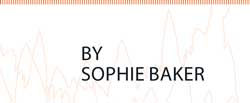05 Jun 2017 - {{hitsCtrl.values.hits}}

 Frontier markets are back in vogue for money managers around the globe, but now the subsector of the emerging markets asset class is earning its right to stand alone in institutional investor portfolios.
Frontier markets are back in vogue for money managers around the globe, but now the subsector of the emerging markets asset class is earning its right to stand alone in institutional investor portfolios.
After a seven-year cycle of difficulties, developing countries in early 2016 moved back onto investors’ agendas against a backdrop of improved fundamentals, outlook and performance by emerging markets companies as well as better structural growth potential vs. that of developed markets.
The excitement of emerging markets’ potential rippled throughout the investment industry, with inflows over the year. But whereas the emerging markets boom from 2002-2009 saw investors lumping together countries into developed vs. emerging, money manager sources said they more recently are having developed, emerging and frontier market discussions as separate conversations with their institutional investor clients.
“We think that investors are increasingly more aware of what it means to invest in frontier markets as a separate asset class,” said Emre Akcakmak, Portfolio Adviser at East Capital International AB, based in Dubai, United Arab Emirates.
“Most of our clients are happy to see that our emerging market funds can invest partly in frontier markets. However, the real story is that there is a growing interest to make portfolio allocations specifically to frontier funds in order to capture the attractive growth and diversification opportunity that they offer.”
The firm manages €2.7 billion (US $ 3 billion) in assets and has started to see “improvement in flows to frontier markets,” but Akcakmak said, “We need to wait a bit longer to see if the recent interest will continue.
Seeing the glass as half full, we think that frontier markets may be at the crossroads after having seen continuous outflows for the past years.”
Andrew Brudenell, Head of Frontier Markets at Ashmore Group in London, also has seen the trend. He said clients are “looking at emerging markets and want to look at emerging markets vs. frontier markets, think about what sort of exposure (to have) … (and) asking us questions like ‘how do we split our exposure?’ These are fantastic questions we never used to get before.”
The opportunity is getting too big to ignore. Bryan Carter, Head of Emerging Markets Fixed Income at BNP Paribas Investment Partners in London, cited the International Monetary Fund (IMF) data showing “32 frontier economies are growing at more than 4 percent a year, compared to 21 countries in the broader emerging market universe. Furthermore, for those investors looking to achieve a fully global portfolio, frontier markets are too significant a proportion of the global universe to ignore.”
Carter said 94 of the 190 IMF member states are classified as frontier.
“Although currently mostly represented as an interesting diversification opportunity in broader fixed-income portfolios, this next generation market is looking increasingly likely to become an autonomous asset class in its own right,” he added.
Allocations are low, but growing. Dominic Bokor-Ingram, Portfolio Manager at Charlemagne Capital U.K. Ltd in London, said the firm estimates between 10 percent and 25 percent of investors’ emerging market exposure is allocated to frontier markets.
Data provided by EPFR Global showed assets in frontier market equity strategies were US $ 17.9 billion as of April 30, up 7.8 percent compared with December 31. Net flows have been mixed, show data.
And investors might have more exposure than they think. When it comes to the J.P. Morgan Emerging Market Bond index, probably the dominant benchmark for hard currency sovereign debt, “two-thirds of the names in the index are arguably frontier … although a lot of them only have one small bond. So … when you’re buying the index you actually have exposure to a lot of frontier countries,” said Stephen Bailey-Smith, an Investment Strategist and Senior Economist at Global Evolution in London.
Growing opportunity
The chance to invest in frontier markets appears to be growing, with a number of money managers moving to put emphasis on these countries.
Jupiter Asset Management announced this month the launch of the Jupiter Emerging & Frontier Income Trust PLC, which invests in a portfolio of companies exposed directly or indirectly to emerging and frontier markets worldwide.
“Many clients have an allocation to emerging markets but no frontier exposure at all,” said Ross Teverson, Jupiter’s Head of Strategy, Emerging Markets, in London.
“We found that the idea of a single emerging market product that also offers selective frontier markets exposure appealed to a number of clients.” While the situation differs from one market to another, “we are seeing a pickup in trading volumes from a relatively low base in a number of our frontier markets, suggesting that there is increased interest from foreign investors,” Teverson said.
Franklin Templeton (BEN) Investments (BEN) plans to reopen its soft-closed Templeton Frontier Markets strategy. The Luxembourg-registered vehicle soft-closed in 2013 due to a surge in flows, at US $ 2.12 billion. The fund now has US $ 880.6 million and will reopen May 31, a spokeswoman confirmed. Speaking at a media briefing in London in May, Franklin Templeton executives said part of the reason to reopen the strategy was the investment opportunity in frontier markets. And the timing means investors should capture some of the reform processes launching in some of the countries.Mark Mobius, Executive Chairman of Templeton Emerging Markets Group, highlighted the opportunities, pointing out that eight of the 10 fastest-growing economies this year are expected to be frontier markets.
At the same briefing Carlos Hardenberg, Senior Vice President and Managing Director, Templeton Emerging Markets Group, said frontier markets have “very little correlation” with emerging markets and developed markets and said reforms are picking up speed.
In fact, the correlation of frontier to emerging or developed indexes has been between 0.3 and 0.4 since 2010, said Boker-Ingram. “This weak correlation is mainly due to low levels of foreign ownership of frontier equity markets and low levels of debt in these countries.”
Diana Kiluta, London-based Emerging Markets Debt Portfolio Manager at J.P. Morgan Asset & Wealth Management, said the firm has been positive on frontier markets.
The global recovery in growth and commodity prices, coupled with easy monetary conditions, “should continue to support these economies,” she said. “More specifically, frontier markets generally trade at a discount to broader emerging markets, reflecting their lower liquidity and weaker political and financial institutions.”
Kiluta expects to see even more differentiation within frontier markets as global growth continues to gain momentum “as higher growth rates, positive demographics and improvements around both political and financial institutions support the markets.”
And Rami Sidani, Head of Frontier Markets at Schroders in Dubai, said frontier markets “offer a structural growth story, which should lead to strong financial returns over the long run. The countries we invest in are witnessing a strong gross domestic product (GDP) growth, supported by favourable demographics and a strong wave of reforms.
Furthermore, we are witnessing an expansion in capital markets, leading to a better representation of the underlying economy. This evolution is providing depth and enhancing liquidity, factors that have made the asset class more visible,” he said. An investor viewing the asset class as too small to make it a mainstream allocation yet continuing to gain exposure under the emerging markets umbrella might use frontier markets as an alpha generator. The “ability to generate alpha in the world of frontiers continues to be strong due to the nascent nature of these markets, which continue to be dominated by retail investors. Long-term investors can achieve above-average returns by capitalizing on the inefficiencies in the markets,” added Sidani.
Risks remain
However, there are risks associated with frontier countries; markets are less liquid than emerging and developed countries.
“With much higher earnings growth and a valuation discount of about 40 percent, the only barrier to a higher weighting (to frontier markets) is the amount of money that can be put to work,” said Bokor-Ingram of Charlemagne Capital.
He said the firm’s frontier market strategies have seen more than £350 million (US $ 451 million) of inflows this year.And despite the good opportunities, growth and structural reforms, “by the very nature and definition of frontier markets, they are almost more prone to exogenous shocks — those risks that can come from left field,” warned Ashmore’s Brudenell.
Those risks can include a coup, famine, poor regulatory decisions, poor macroeconomic policy or a disruptive political event.
“These risks are big and they’re real — and that’s why we need to remain … diversified. We spend our lives trying to research those risks away, but we need to be honest with ourselves and clients. These markets are more likely to surprise us,” Brudenell said. For that reason, the manager remains diversified and considers liquidity to be very important.
(Courtesy http://www.pionline.com)
08 Jan 2025 59 minute ago
08 Jan 2025 2 hours ago
08 Jan 2025 4 hours ago
08 Jan 2025 5 hours ago